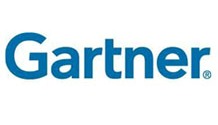  The use of cloud computing is growing, and by 2016 this growth will increase to become the bulk of new IT spend, according to Gartner, Inc. 2016 will be a defining year for cloud as private cloud begins to give way to hybrid cloud, and nearly half of large enterprises will have hybrid cloud deployments by the end of 2017.
Gartner describes cloud computing as a style of computing in which scalable and elastic IT-enabled capabilities are delivered “as a service” using Internet technologies. It heralds an evolution of business in positive and negative ways. It has also become a hot industry term that has been used in many contradictory ways.
“Overall, there are very real trends toward cloud platforms, and also toward massively scalable processing. Virtualization, service orientation and the Internet have converged to sponsor a phenomenon that enables individuals and businesses to choose how they'll acquire or deliver IT services, with reduced emphasis on the constraints of traditional software and hardware licensing models,” said Chris Howard, research vice president at Gartner. “Services delivered through the cloud will foster an economy based on delivery and consumption of everything from storage to computation to video to finance deduction management.”
“In India, cloud services revenue is projected to have a five-year projected compound annual growth rate (CAGR) of 33.2 percent from 2012 through 2017 across all segments of the cloud computing market. Segments such as software as a service (SaaS) and infrastructure as a service (IaaS) have even higher projected CAGR growth rates of 34.4 percent and 39.8 percent,” said Ed Anderson, research director at Gartner. “Cloud computing continues to grow at rates much higher than IT spending generally. Growth in cloud services is being driven by new IT computing scenarios being deployed using cloud models, as well as the migration of traditional IT services to cloud service alternatives.”
“There is a flawed perception of cloud computing as one large phenomenon,” said Mr. Howard. “Cloud computing is actually a spectrum of things complementing one another and building on a foundation of sharing. Inherent dualities in the cloud computing phenomenon are spawning divergent strategies for cloud computing success. The public cloud, hybrid clouds, and private clouds now dot the landscape of IT based solutions. Because of that, the basic issues have moved from ‘what is cloud’ to ‘how will cloud projects evolve’.”
Howard said that private cloud gets a lot of attention and is today the most popular form of cloud across various sectors. However, private cloud is not appropriate for all services and, while the majority of midsize and large enterprises will deploy private cloud services over the next few years, private cloud will only be used for specific services.
As enterprises build their cloud computing strategy, the program should be broken down into two primary IT centric work streams, two supporting IT work streams and a strategic business work stream. The two primary work streams are: the enterprise as a consumer of cloud services, and the enterprise as a provider of cloud services. When the enterprise is a consumer, the focus is on the IT-related capabilities delivered as a service. The main goal is determining if, when, where, how and why cloud services should be used. The hardware and software used to implement the service are handled by the service provider and are not a concern of the consumer. When the enterprise is a provider (e.g., building a private cloud) the focus shifts. Now the hardware, software and processes used to implement a cloud service are a primary focus. Service consumption only enters the equation to the extent a cloud service is used as part of the supply chain to develop and deliver the cloud service.
The supporting enterprise work streams are: securing, managing and governing cloud services, and building solutions based on cloud services. There must be software, appliances or services in place to facilitate the consumption and use of cloud service (e.g., provisioning onto a cloud infrastructure service). Cloud solutions may use any combination of cloud infrastructure, platform, software, information or business process services.
A final work stream focuses on the business. Besides being a consumer of cloud services or a provider of cloud services to an internal audience there are opportunities to use the cloud delivery model to provide services to customers and business partners. This represents an evolution of the enterprise's market-facing website and B2B initiatives such as EDI. IT should partner with the business to explore where the service delivery model, agility and elasticity attributes of the cloud style of computing support business optimization and innovation.
“Using global-class thinking to address global-class problems, the focus should always be outward, not inward in adopting cloud computing,” said, Howard. “As discussed, adoption of cloud computing happens in stages. The types of applications and workloads to be moved can indicate which stage of adoption is most appropriate.” |